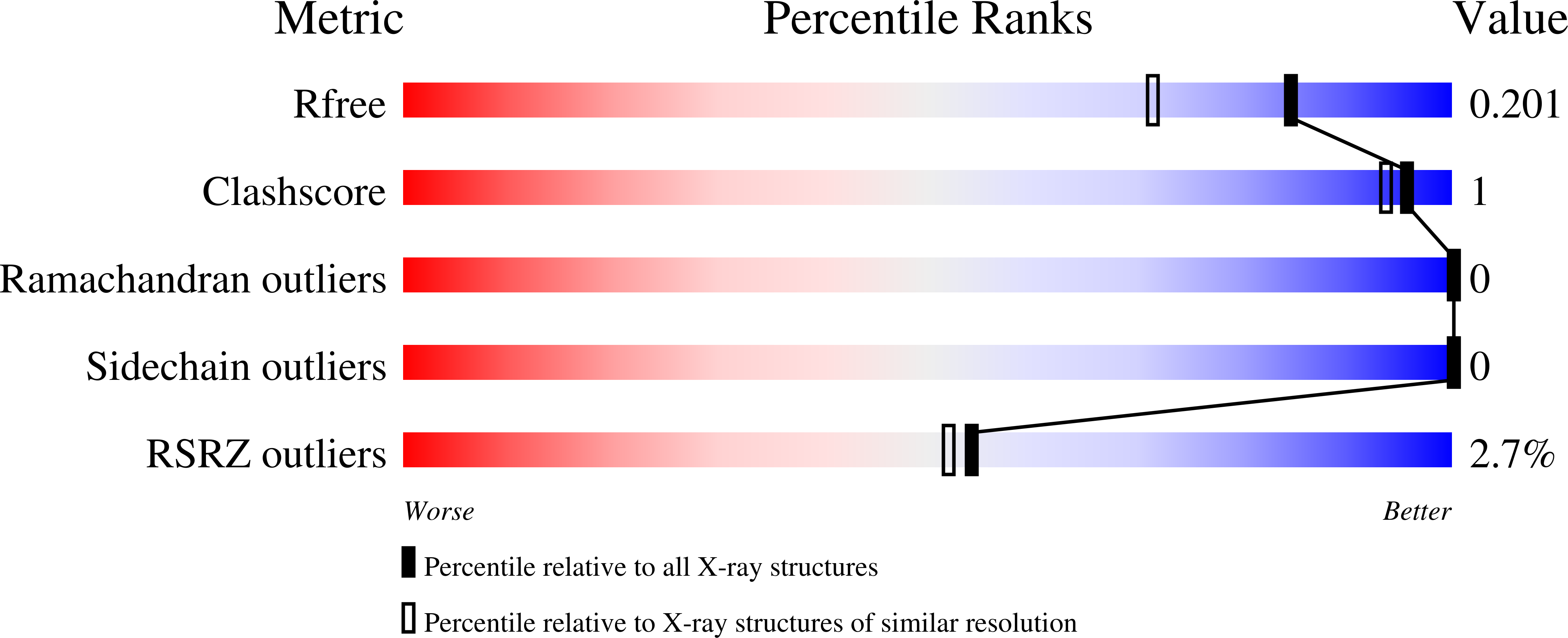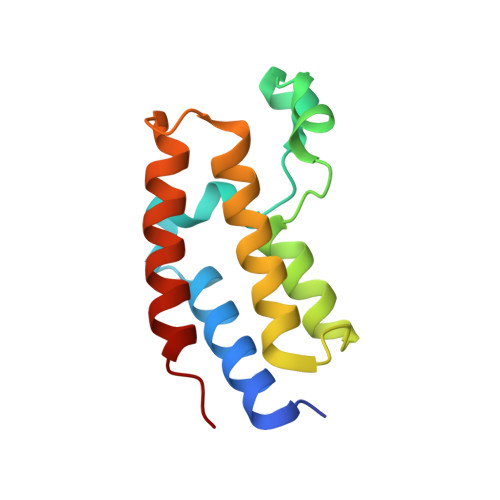Template-Hopping Approach Leads to Potent, Selective, and Highly Soluble Bromo and Extraterminal Domain (BET) Second Bromodomain (BD2) Inhibitors.
Aylott, H.E., Atkinson, S.J., Bamborough, P., Bassil, A., Chung, C.W., Gordon, L., Grandi, P., Gray, J.R.J., Harrison, L.A., Hayhow, T.G., Messenger, C., Mitchell, D., Phillipou, A., Preston, A., Prinjha, R.K., Rianjongdee, F., Rioja, I., Seal, J.T., Wall, I.D., Watson, R.J., Woolven, J.M., Demont, E.H.(2021) J Med Chem 64: 3249-3281
- PubMed: 33662213
- DOI: https://doi.org/10.1021/acs.jmedchem.0c02156
- Primary Citation of Related Structures:
7NQ5, 7NQ7, 7NQ8, 7NQ9, 7NQI, 7NQJ - PubMed Abstract:
A number of reports have recently been published describing the discovery and optimization of bromo and extraterminal inhibitors which are selective for the second bromodomain (BD2); these include our own work toward GSK046 ( 3 ) and GSK620 ( 5 ). This paper describes our approach to mitigating the genotoxicity risk of GSK046 by replacement of the acetamide functionality with a heterocyclic ring. This was followed by a template-hopping and hybridization approach, guided by structure-based drug design, to incorporate learnings from other BD2-selective series, optimize the vector for the amide region, and explore the ZA cleft, leading to the identification of potent, selective, and bioavailable compounds 28 (GSK452), 39 (GSK737), and 36 (GSK217).
Organizational Affiliation:
Epigenetics Discovery Performance Unit, GlaxoSmithKline, Medicines Research Centre, Stevenage, Hertfordshire SG1 2NY, U.K.
















